Entering the 1990s, Cruise doubled down on his strategy of balancing commercial films with more “serious” films. This decade would see him work with directors like Sydney Pollack, Rob Reiner, Ron Howard, Neil Jordan, Cameron Crowe, Paul Thomas Anderson, and Stanley Kubrick. Though he lost the Oscar, his first film racing out of the gate was Days of Thunder, a high-octane thriller set in the world of NASCAR. The film reunited Cruise with Top Gun director Tony Scott and was notable for being Cruise’s only writing credit (he shares a “story by” credit with Robert Towne). The film suffered many delays during filming but was finally released in June 1990, earning mixed reviews. Though not the smash the studio hoped for, the film was still considerably profitable, grossing $158 million from a $60 million budget. This was a film I hadn’t seen until I set out to write this post and I was surprised how much Talladega Nights “borrowed” from this film, other than John C. Reilly, of course. Most notably, this was the film that introduced Cruise to his future wife, Nicole Kidman.

Between 1992 and 1994, it became clear that Cruise was on the hunt for his second Oscar nomination. His follow-up to Thunder, Far and Away, paired him with his wife, Nicole Kidman, and director Ron Howard. The film follows two immigrants (played by Cruise and Kidman) who immigrate to America in the Land Rush of 1893. Receiving mixed reviews, the film would now be referred to as what we call “Oscar bait.” Cruise was gunning for his second nomination and Kidman, her first. Additionally, it looked like Howard was hoping to sink his teeth into some serious fare. Before this, the majority of his films were comedies like Splash, Night Shift, and Parenthood. This was a mere two years before Howard would break into the pantheon of respected directors with Apollo 13. Cruise’s second film of 1992 would fare better at the Academy Awards.
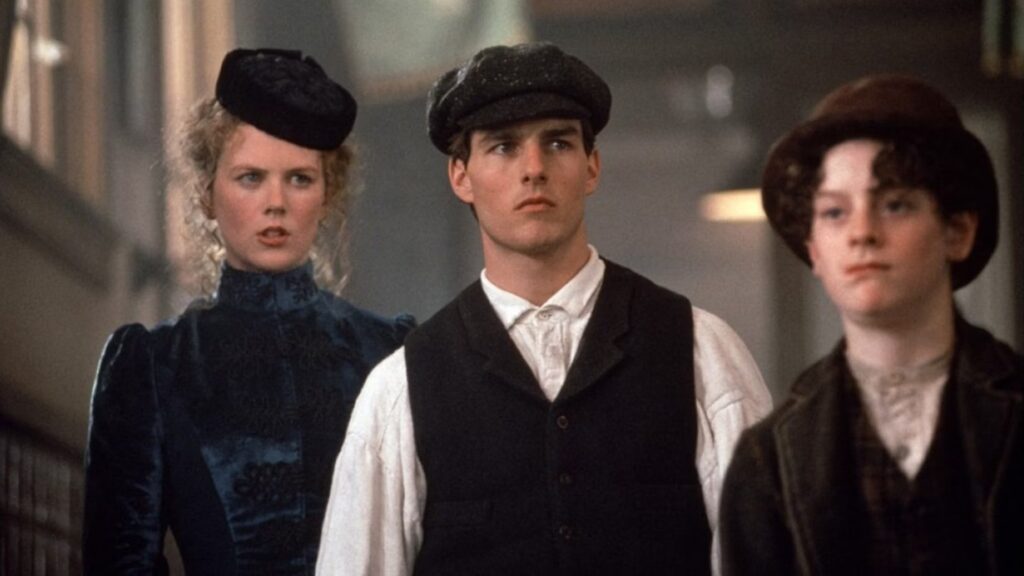
Movie #6: A Few Good Men
If his first film of 1992 was a failed “Oscar bait,” then his second film of 1992 was successful enough at the Academy Awards that it wouldn’t have been classified as “bait.” Directed by Rob Reiner, this adaptation of Aaron Sorkin’s play tells the story of a trio of lawyers (Cruise, Demi Moore, Kevin Pollak) at the court-martial of two marines accused of murdering a fellow marine. As they dig into the case, they, of course, realize things aren’t what they seem. This film is a perfect example of how a great film can benefit from the marriage of great writing, great directing, and great acting. Adapting his stage play, it’s clear here that Sorkin would become one of the most gifted writers of his generation. It’s no wonder he’s the man behind some of the greatest films and television series of the last thirty years. Have you ever heard anyone refer to dialogue as “Sorkian?” Reiner, as a director, had a wide-ranging filmography. He proved himself with comedy (This is Spinal Tap), romantic comedy (When Harry Met Sally), fantasy (The Princess Bride), drama (Stand by Me), and horror (Misery), but this would be his first courtroom drama. Then, there’s the power of the three leads (Cruise, Moore, Jack Nicholson) and the power of the supporting players (Pollak, Kevin Bacon, JT Walsh, Kiefer Sutherland). Each of these three elements was essential to creating a great film.
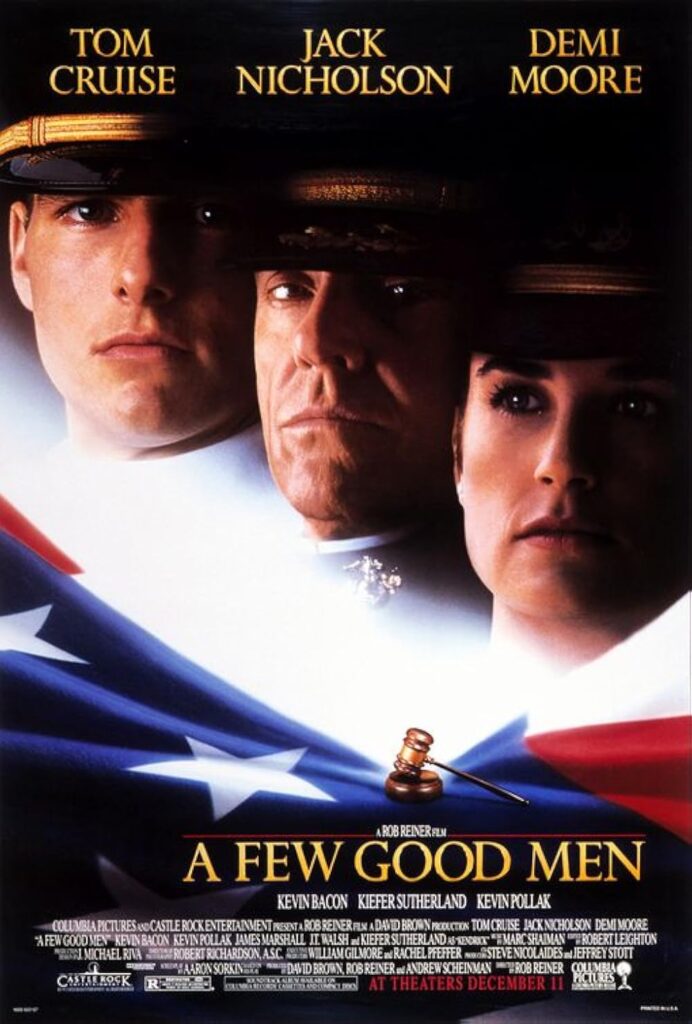
Cruise stars as Lt. Daniel Kaffee, the young, charming, and brilliant lead attorney to the accused. Cruise shines in this role, taking every word written by Sorkin, and finding the cadence and the musicality of the dialogue. The scene where Kaffee has Jessup (Nicholson) on the stand and he’s grilling him about the use of Code Reds, is enthralling. It’s one of the best back-and-forths I’ve seen on screen, maybe ever. With just words and camera movement, Reiner and Sorkin glue us to our seats. It’s like watching a tennis match, waiting for a victor. The scene is prolonged, stretched out as far as possible, while still maintaining integrity. This makes it all the more satisfying when Kaffee nails Jessup and in a fit of rage, announces he ordered the Code Red. That’s some truly great acting.
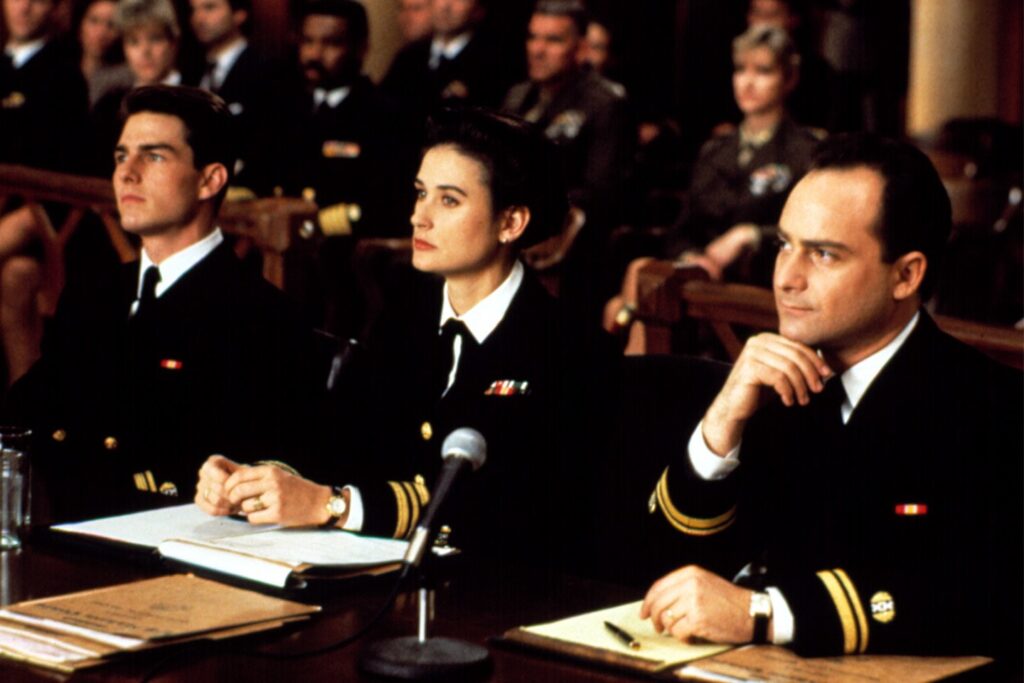
The film was released in December 1992 to rave reviews. It was nominated for four Academy Awards at the next year’s ceremony. A little low, if you ask me. The film did get into Best Picture, Film Editing, and Sound Mixing, but Reiner and Sorkin were omitted from their respective categories. Once again, Cruise had to watch his co-star, Jack Nicholson, earn acknowledgement from the Academy while he sat on the sidelines. The film fared better at the Golden Globes, where Sorkin and Reiner did get in, as well as Cruise for Best Actor (Drama). How close Cruise came, we may never know for sure. Nicholson is great, don’t get me wrong. Five million for ten days of shooting and an Oscar nomination? Take it while you can get it, but in those scenes where Nicholson is chewing up the scenery, he wouldn’t have been able to play off that energy without Cruise. While it didn’t earn him his second nomination, A Few Good Men did remind audiences and studios that Cruise was not only a bankable star, but a reliable actor.
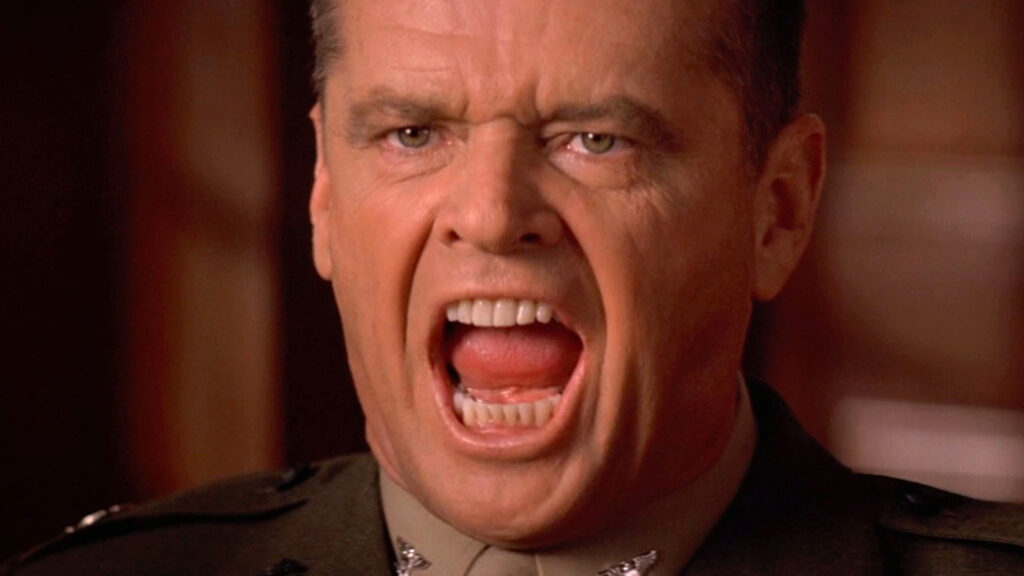
Off the heels of A Few Good Men, Cruise took on the role of Mitch McDeere in the adaptation of John Grisham’s best seller, The Firm. Directed by Oscar-winning director Sydney Pollack, the film centers around an eager young attorney who goes to work for an illustrious, yet mysterious law firm known from within simply as “the firm.” As he gets deeper into his work, he realizes the firm is harboring secrets of its own and it turns into a tense legal thriller. Like A Few Good Men, Cruise would not be considered for Academy recognition, but one of his co-stars would be. One might think Gene Hackman would be the one singled out for his slick, yet slimy portrayal of Mitch’s mentor, Avery Tolar. However, it was Holly Hunter’s portrayal of secretary Tammy Hemphill that was recognized by the Academy. Despite only appearing on screen for approximately six minutes, Hunter was nominated for the Academy Award for Best Supporting Actress. Ironically enough, Hunter lost the award to her Piano co-star Anna Paquin, the same film for which she won the Oscar for Best Actress that year.
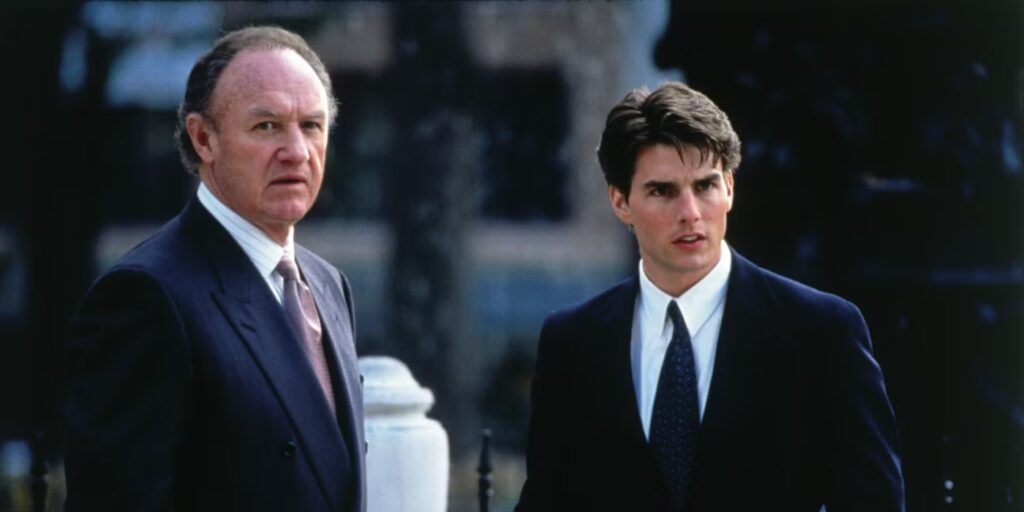
After The Firm, Cruise took on his most bizarre role yet, playing Lestat in the adaptation of Anne Rice’s Interview with the Vampire. The move bewildered lots of people, particularly Rice, who thought Cruise was not right for the role and had no qualms about vocalizing her opinion. She was so angered by the casting that she withdrew herself from the production, only seeing the film for the first time when it was completed. Upon seeing the completed cut, Rice took back her criticism and even took out an ad in the Daily Variety praising his performance and apologizing for doubting him. If I put myself in Cruise’s shoes, I could see why he would want to take on the role. The idea of playing an over-the-top, hammy vampire sounds fun. Add to that the idea of working with director Neil Jordan, fresh off of his Oscar-winning film The Crying Game, and a 10 million dollar paycheck, I can see why he signed on.
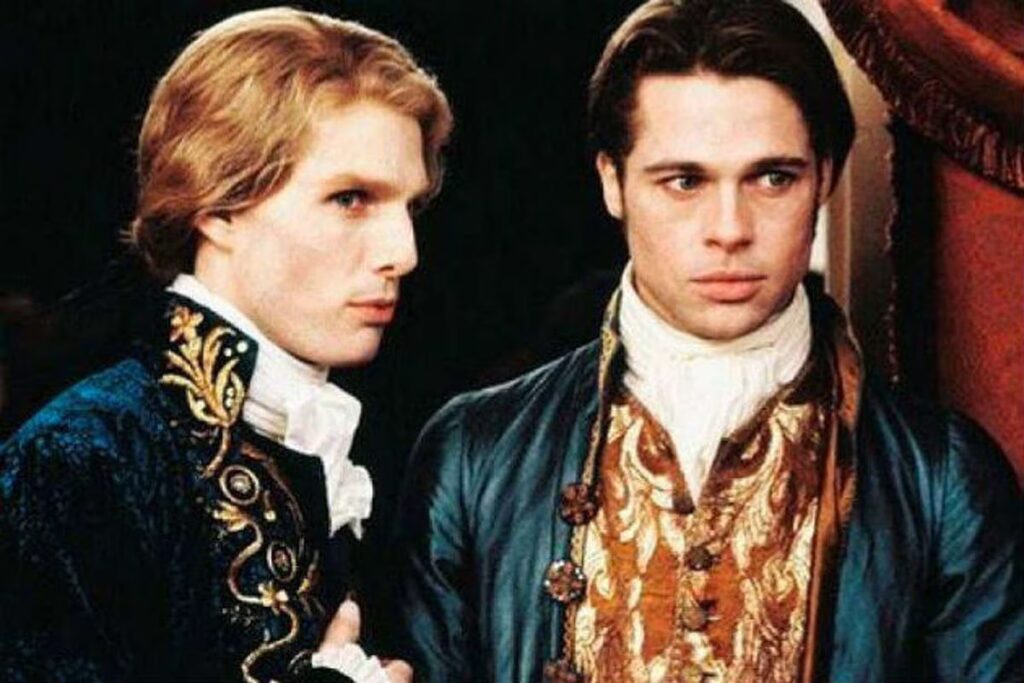
I’ll admit, I wasn’t a fan of this film, probably because I’m not the target audience. Overall, I wasn’t interested in the story and the film was far too dark for me. I was kind of surprised by the homoerotic undertones I detected. Maybe that wasn’t the intention of the filmmakers, but I detected some undertones in the scenes where Tom Cruise is sucking the blood out of Brad Pitt’s neck. I want to be clear, it didn’t bother me, but it did shock me given that homosexuality was still a bit of a taboo when the film was released. They may be acclaimed actors now, but at the time, I think you cast Tom Cruise, Brad Pitt, and Antonio Banderas more for their looks than their acting abilities. It also says something, at least to me, when ten-year-old Kirsten Dunst gives the best performance in the film. It’s worth mentioning that Dunst was nominated for a Golden Globe for Best Supporting Actress.
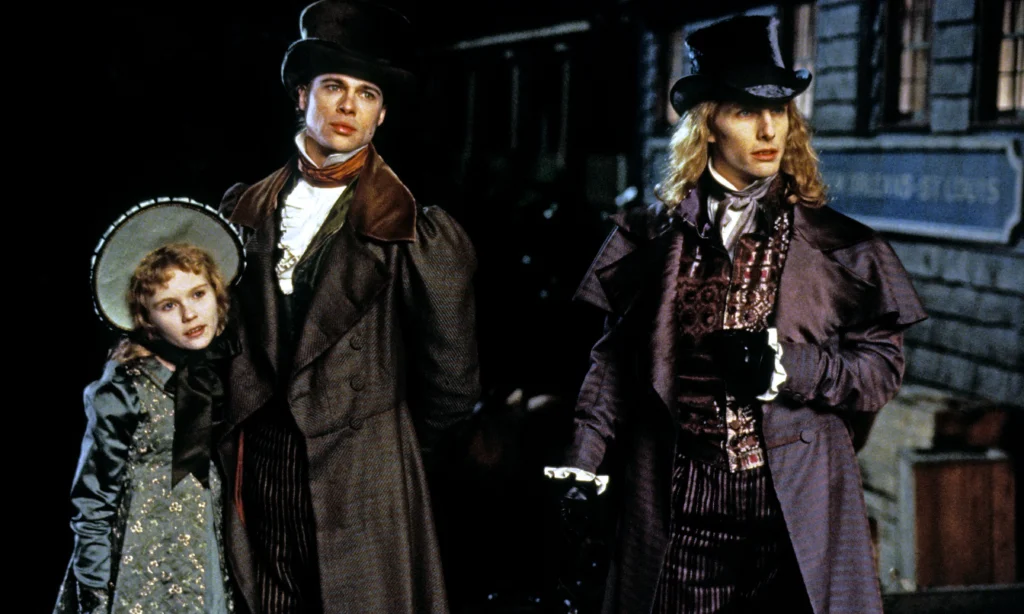
Jumping forward, 1996 brings us two crucial movies in his filmography. He jumps to action star status and tackles producing head-on with Mission: Impossible. As I said, a whole article focused on the franchise will be coming soon. His second film of the year finally earns him his second Academy Award nomination when he teams up with writer/director Cameron Crowe on Jerry Maguire.
Movie #7: Jerry Maguire
After spending the first half of the decade searching for the right material to nab him his second Oscar nomination, Cruise’s prayers would be answered in the form of writer/director Cameron Crowe. In Jerry Maguire, Cruise plays the titular sports agent who is let go from his agency and blackballed after releasing a controversial mission statement. Leaving to start his agency, Jerry must balance his personal feelings for his co-worker (Renée Zellweger) and his one remaining client, fading NFL star Rod Tidwell (Cuba Gooding Jr.). The film is one of Cruise’s most iconic characters, but it didn’t start that way. The film was written with another Tom in mind – Tom Hanks. However, Crowe, a perfectionist, took so long in writing his draft that he felt Hanks was too old for the role. Crowe then gave the role to the six year younger Cruise.
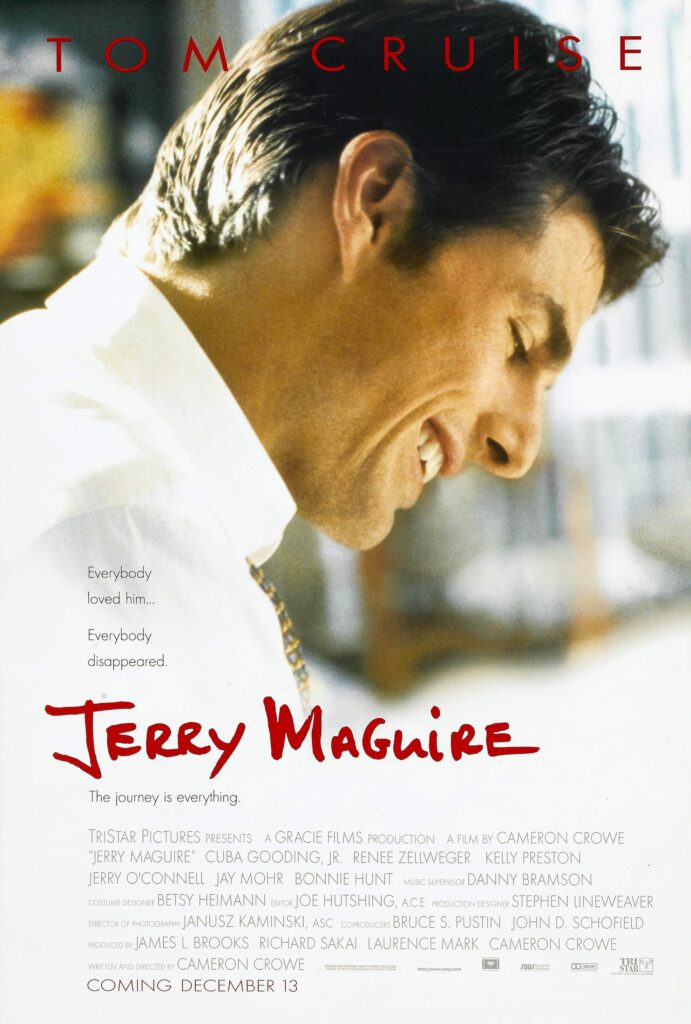
I remember watching a behind-the-scenes feature a while back and in an interview with Tom Cruise, he recounts that his agent tried to avoid showing him the script. In her mind, this character was a loser and Tom Cruise doesn’t play losers. Well, the idea of playing a loser, is what initially attracted Cruise to the role. Jerry Maguire is at one point, a loser. Like most classic stories, when the film starts, he sits atop his throne. By the second act, he loses everything and has to learn through hardships, the value of what he had. By that definition, he is a loser. Of course, by the end of the film, he’s back on top of the world with new friends and a new outlook on life. See, nothing new. However, Crowe crafts these characters and this world so specifically, that this thousand-year-old setup seems new. Like with Sorkin in A Few Good Men, having that quality writing helps the actors tremendously.
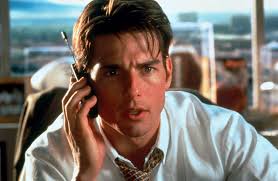
As Jerry Maguire, Cruise is fantastic in what’s a slightly more complex rom-com. Harkening back again to A Few Good Men, where Cruise and Nicholson’s performances elevated the other’s, the same could be said about the trio of Cruise, Gooding, and Zellweger. Zellweger brings out the lost, hopeless romantic in Cruise, whereas Gooding brings out the desperation and the playfulness. Cruise has been in some great movies, but I would argue that Jerry Maguire is his most “feel-good.” It’s impossible not to have a smile on your face when the credits roll. The audience agreed. It was the ninth highest-grossing film of the year upon its release on December 13, 1996.
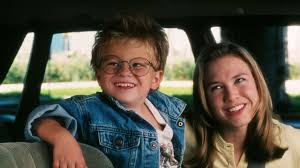
In early 1997, it finally happened for Cruise. The film was nominated for five Academy Awards including Best Picture and Best Actor for Cruise. Crowe failed to get a nomination for Best Director, though he got one for Original Screenplay. I think the most egregious omission, however, was Zellwegger in Best Supporting Actress. This was the year that Juliette Binoche won for The English Patient. Having seen none of the nominated performances in the category, I can’t speak to the quality of the other nominees. With that out of the way, we turn back to Tom Cruise.

In this particular year, however, the nomination itself would be the win for Cruise. Geoffrey Rush in Shine swept every major award ceremony that year and Cruise knew he would be going home empty-handed. Cruise did take home the Golden Globe for Best Actor (Comedy), only because Rush took home Best Actor (Drama). The ultimate irony here, and I’m sure this wasn’t lost on Cruise, is that Gooding took home the Academy Award for Best Supporting Actor. First of all, I have issues with his performance. I think it is way too overhyped. I think Edward Norton in Primal Fear or even William H. Macy in Fargo would have been a better choice. I digress. After years of playing second fiddle to Newman and Hoffman and watching them win Oscars, he had to watch Gooding play second fiddle to him and take home the award. When you watch the clip of Gooding’s Oscar win, you can see Cruise. He looks genuinely happy for his co-star and goes as far as pulling him tight for a hug, but part of me wonders if there is pain behind those eyes. Luckily for Cruise, his third Oscar nomination was coming sooner than he expected.
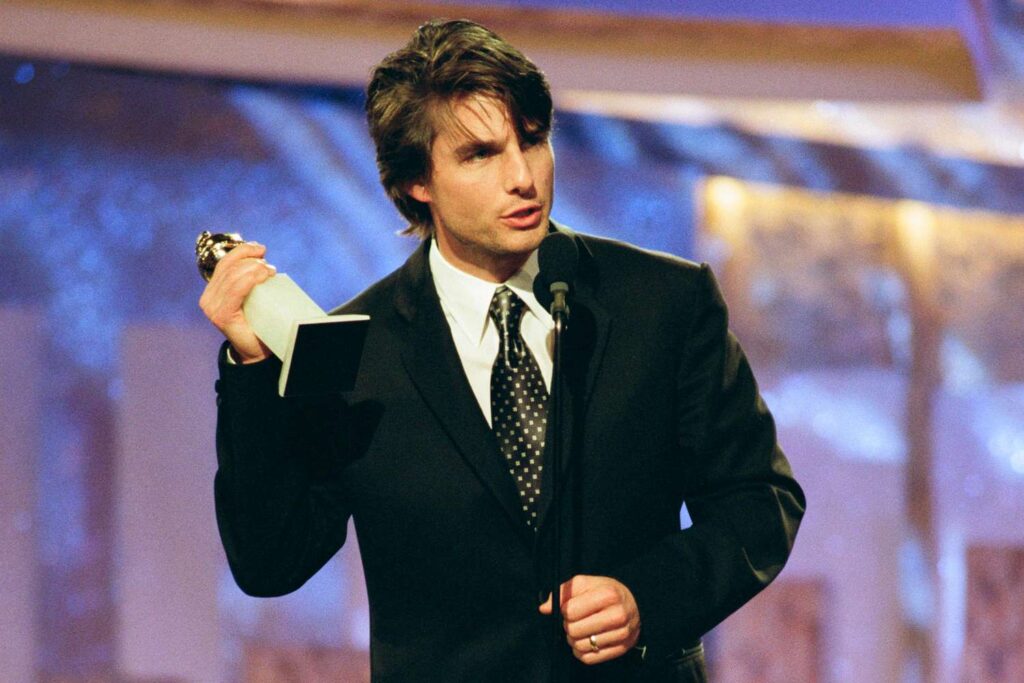
Cruise started the decade with the blockbuster Days of Thunder and ended it with dramas by two esteemed auteurs – one up-and-coming and one legend on his final film. His first film since Jerry Maguire was released in 1996 was Stanley Kubrick’s Eyes Wide Shut, released in July 1999. A long-gestating project for Kubrick, the film follows a married couple Bill and Alice Harford (Cruise and Kidman). After Alice reveals she contemplated having an affair a year earlier, Bill is sent on a tailspin and embarks on a night-long adventure in New York City where he infiltrates a masked orgy of a secret society. Filming began in 1996 and lasted until June 1998. The Guinness Book of World Records named the film the longest continuous film shoot ever at 400 days. Both Cruise and Kidman signed contracts stating that they would not sign on to any projects until principal photography was complete. Kubrick’s final cut was shown to his lead actors and Warner Bros. on March 1, 1999. Kubrick died suddenly of a heart attack six days later, making this his final film.
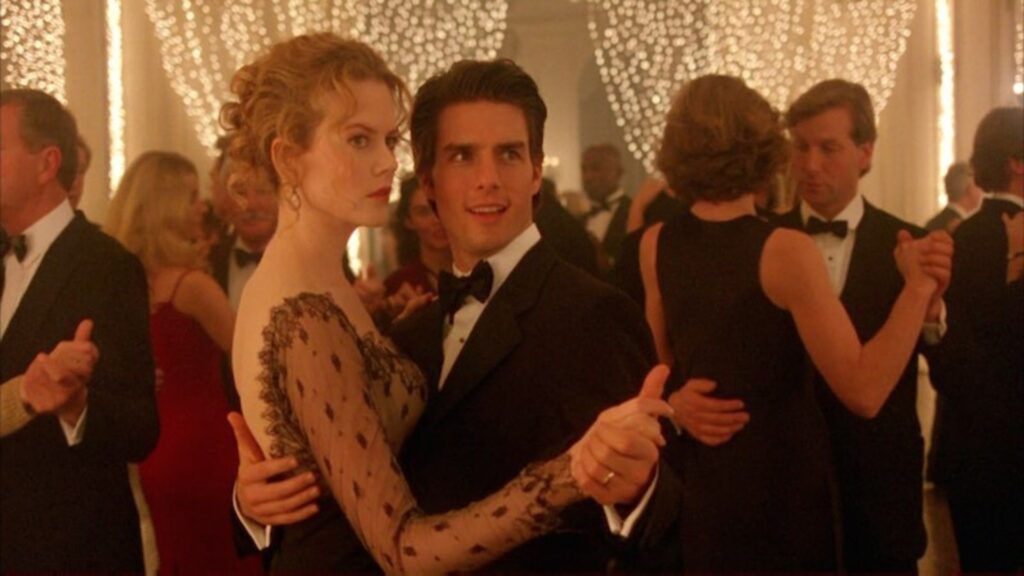
If the plot description made it sound like an odd movie, that’s because it was, at least in my opinion. I had seen this movie once about a decade ago, but I had the luxury of rewatching it at the Alamo this past December, so it is fresh in my head. What shocked me upon my second rewatch is how little screen time is dedicated to the orgy itself. The orgy was one of the only things I remembered going into the rewatch, but in actuality, there was only about 15 minutes of screen time devoted to the orgy in a 159-minute long movie. What I forgot about was how internal Cruise’s performance was. As Bill, grapples with this revelation that sends him spiraling down a path of darkness, chaos, and ultimately self-discovery. Despite equal billing, Cruise has far more screen time than Kidman. During the first act, they have equal weight. Once act two hits, however, Bill becomes the main character. The cinematography, like most of Kubrick’s films, was beautiful. The guy sitting closest to me at the Alamo commented on how this film contained his favorite cinematography. He and his wife got a little more excited than I would have preferred when they showed a trailer for Nicole Kidman’s spicy new drama, Babygirl, so I’m not entirely convinced he was only interested in the cinematography.
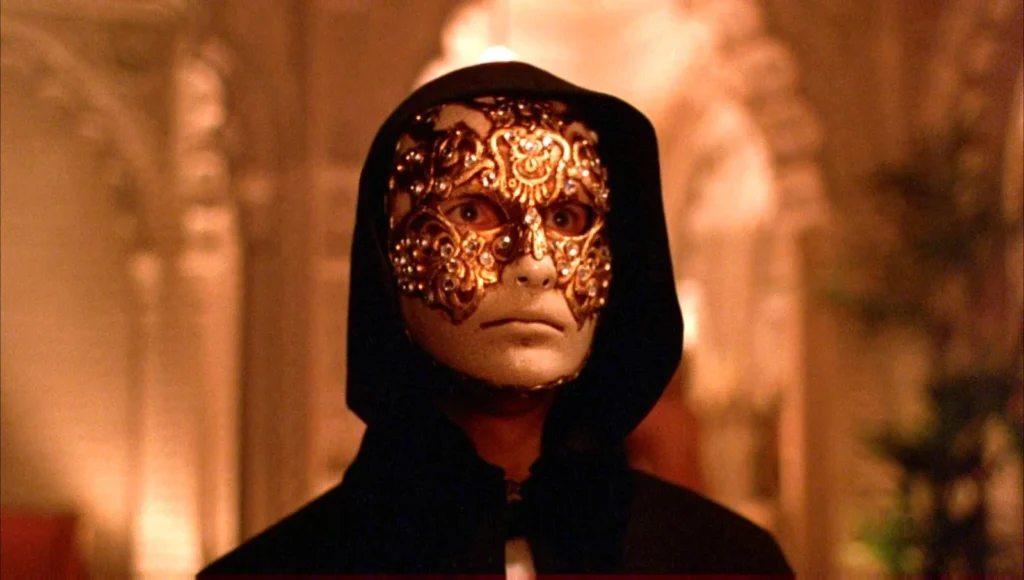
In addition to its record for the longest continuous film shoot, it was also Kubrick’s most successful film, grossing over $160 million. While known for being one of twentieth-century cinema’s distinct auteurs, Kubrick wasn’t exactly known for his kindness. The most famous example of this is how he treated Shelley Duvall on the set of The Shining. He demanded over 120 takes on some scenes, leaving her emotionally exhausted, and isolated her from the rest of the cast or crew to enhance her on-screen anxiety. His tactics may have worked, but the stress caused Duvall’s hair to fall out and she experienced PTSD for the rest of her life. This film was no exception. Kubrick allegedly sewed tension between Cruise and Kidman to amplify their performances. Tactics included having Kidman film multiple takes of the fantasy sex scene between her in the soldier and banning Cruise from the set during the shooting. He also isolated Kidman from Cruise for long periods and fostered the idea in her head that Cruise could be cheating on her. His tactics got the desired results but at the cost of their marriage. The couple divorced in 2001, ending a decade-long personal and professional relationship.
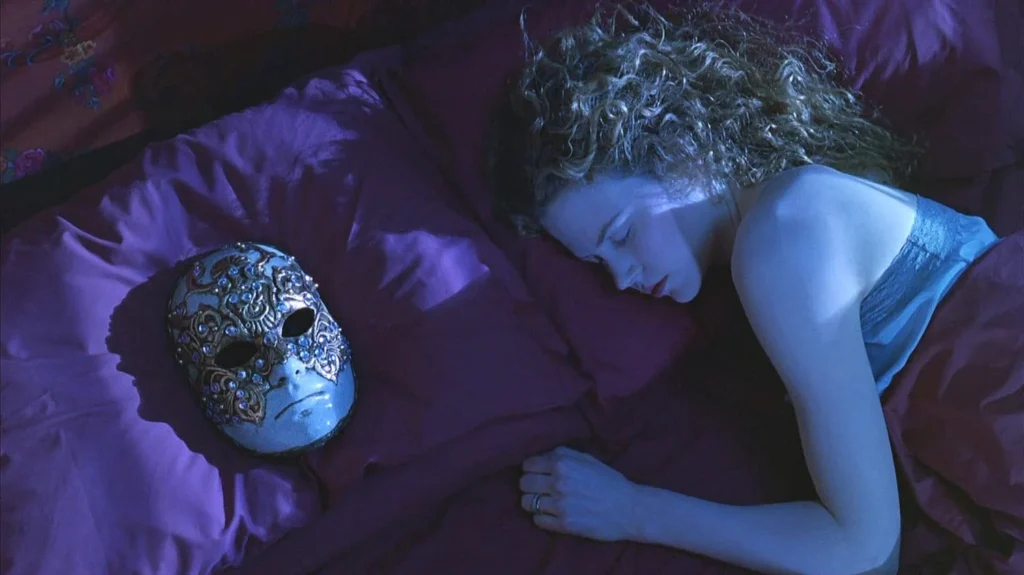
For his final film of the decade, Cruise took a big swing playing a misogynistic motivational speaker in Paul Thomas Anderson’s interpersonal epic, Magnolia.
Movie #8: Magnolia (1999)
Where do I even start with Magnolia? It’s a beautiful, sweeping epic of interrelated characters in search of happiness, forgiveness, and meaning in the San Fernando Valley. Written and directed by Paul Thomas Anderson, the film was his ambitious follow-up to his 1997 hit, Boogie Nights. Boogie Nights is one of my favorite films of all time and I would consider it to be epic. It’s two and a half hours long and explores the lives of these adult filmmakers throughout the 70s and 80s. While Magnolia takes place mainly over one day, the film is no less epic. Clocking it at 188 minutes and featuring 14 central characters and a handful of supporting characters, Anderson outdid himself in scope. Though Magnolia shares many actors in common with Boogie Nights (including John C. Reilly, Melora Walters, and William H. Macy, just to name a few), Magnolia had one thing Boogie Nights didn’t: a bonafide star. At the time of Boogie Nights’ release, Mark Wahlberg, Don Cheadle, Julianne Moore, and Philip Seymour Hoffman were stars in the making. They hadn’t hit that peak yet. Burt Reynolds, who played Jack Horner, was arguably the film’s biggest star. However, Reynolds’ career had been on a downward slope and Boogie Nights brought renewed interest in his career, as well as an Oscar nomination. When Cruise was cast in Magnolia, he was at his height. He needed no career rehabilitation, at least not yet.
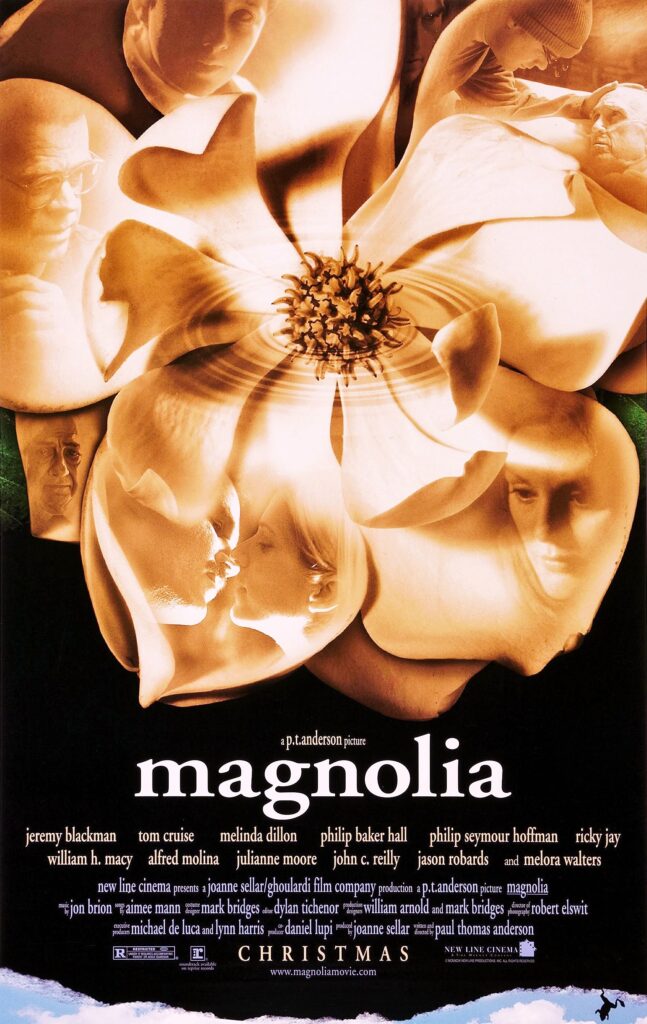
How did Tom Cruise end up in Magnolia? To answer that, we need to go back a little further. After the success of Boogie Nights, 27-year-old Paul Thomas Anderson was riding high. The young auteur was given free rein and the final cut for his next film. He initially set out to write an intimate and small-scale film. However, as he kept writing, the script began to blossom into its final form. At the same time, Cruise was impressed with Boogie Nights and wanted to work with the director. He invited Anderson to the set of Eyes Wide Shut and expressed this to the director. Months later, the finished script arrived at Cruise’s office with a role written for him: Frank T.J. Mackey.
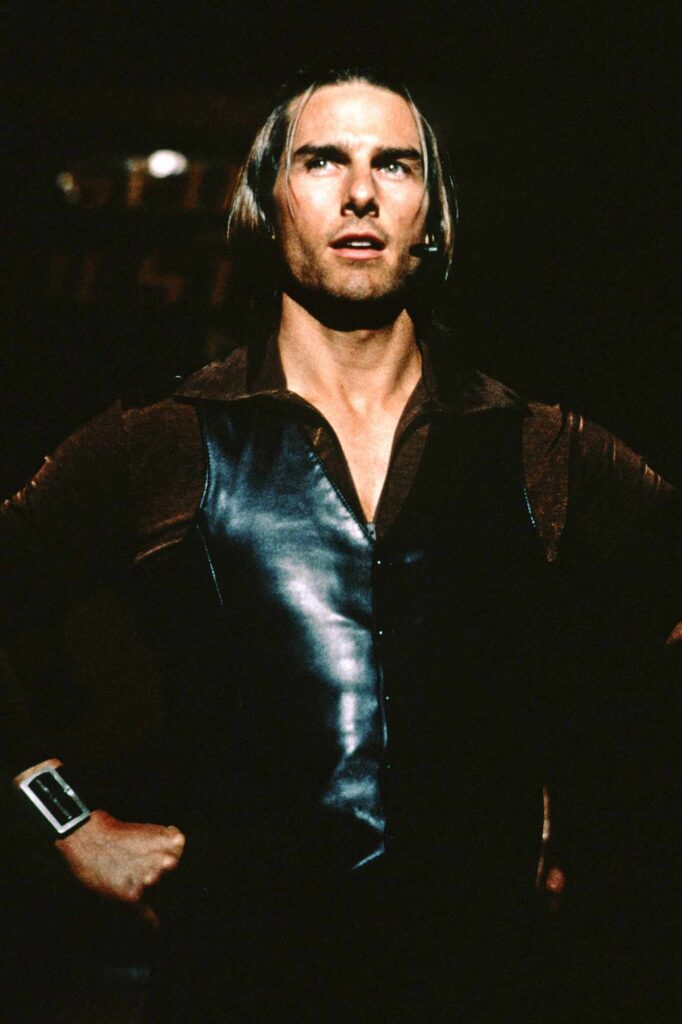
If his manager got the Jerry Maguire script and thought, “Tom Cruise does not play a loser,” she must have had a conniption when she received the script for Magnolia. If he wasn’t a loser, he certainly wasn’t a misogynistic television personality promoting his videos on seduction called “Seduce and Destroy.” Cruise called Anderson a day after reading the script. He expressed both interest and hesitation, which makes sense when you’re offered the part of a character who frequently uses the phrase “Respect the cock and tame the cunt.” Anderson and studio head, Michael De Luca, met with Cruise and convinced him to take the part. Anderson theorized that one of the things that drew Cruise to the part was that after playing a sexually repressed man in Eyes Wide Shut, this role allowed him the opportunity to play larger than life.
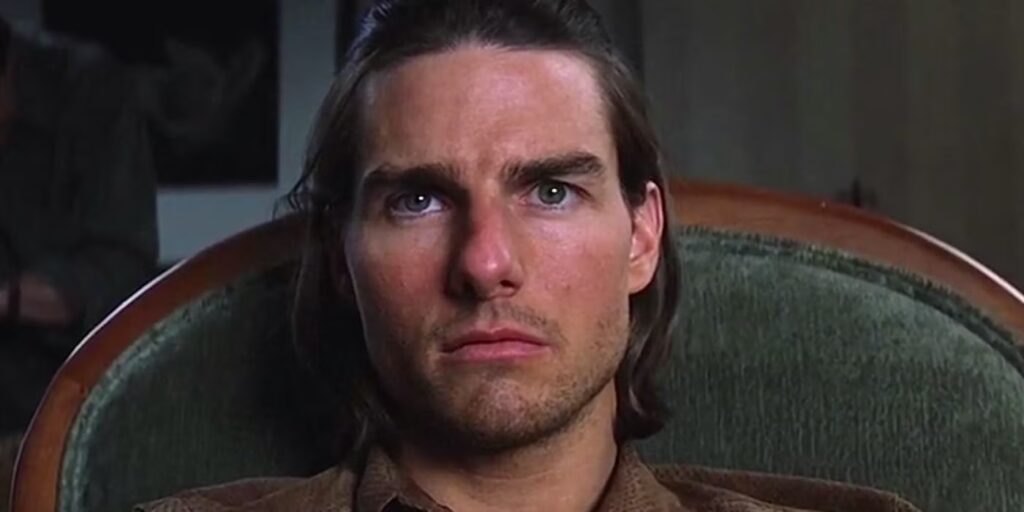
Taking on this role says a lot about Cruise, particularly as an actor. It reaffirms that he’s looking for the best writers and directors to collaborate with. Magnolia marks the only film of the 1990s where Cruise isn’t the lead character. As I mentioned, the film contains 14 central characters, each of which carries approximately the same weight. Anderson fought hard in the marketing of the film for the studio to sell the film as an ensemble, rather than a “Tom Cruise movie.” I think it also says a lot about Cruise that he not only took on the role but embraced it. Mackey is misogynistic, vulgar, and downright unlikeable when we first meet him. However, because he’s played by Cruise, I believe the audience shows more interest than disgust. He may come across as a horrible person, but audiences have proven they’ll follow Cruise just about anywhere. If the role was played by a lesser-known actor, I’m not sure the audience wouldn’t have turned against Mackey. I think it certainly helps that in the span of a three-hour movie, we only experience Mackey in small doses. ChatGPT estimates that Cruise is only on screen for 27 minutes in total.
In the same way, Cruise would later challenge himself with stunts on Mission: Impossible, I choose to believe that Cruise challenged himself to make Mackey relatable. I hesitate to say “likable.” Cruise doesn’t have to make the character likable, but he needs the audience to know where he’s coming from. When we first meet him, not only is he this deplorable human, but he’s presenting this facade of “I’m the best there is, nothing can bring me down.” It’s only after he agrees to a hard-hitting interview with Gwenovier (April Grace), where he is asked personal questions about his past, that his facade begins to crumble. We discover that his estranged father Earl Patridge, a television producer, is dying of cancer. Through a stroke of good fortune, Earl’s caretaker, Phil (Philip Seymour Hoffman), is able to get into contact with Mackey, arranging a meeting between father and son.
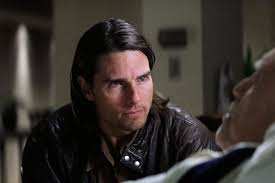
If Mackey’s facade begins to crumble during the interview, it all comes crashing down by the time he reunites with his father. In a profanity-laden catharsis scene, Mackey has an emotional breakdown as he comes to terms with his father’s impending death and forgives him. I believe that scene is some of the best acting of his entire career. I will link it here. I think Magnolia contains Cruise’s best performance in the film. I wouldn’t go as far as saying it’s my favorite film of his, but from a sheer acting standpoint, I believe it to be his best. Critics agreed and Cruise was nominated for his third Academy Award. This time, it was in the category of Best Supporting Actor. After winning the Golden Globe, an Oscar victory seemed imminent. Ultimately, it was not to be. Veteran actor Michael Caine won his second Academy Award for The Cider House Rules. This marks the second time I believe Caine won over a more deserving nominee.
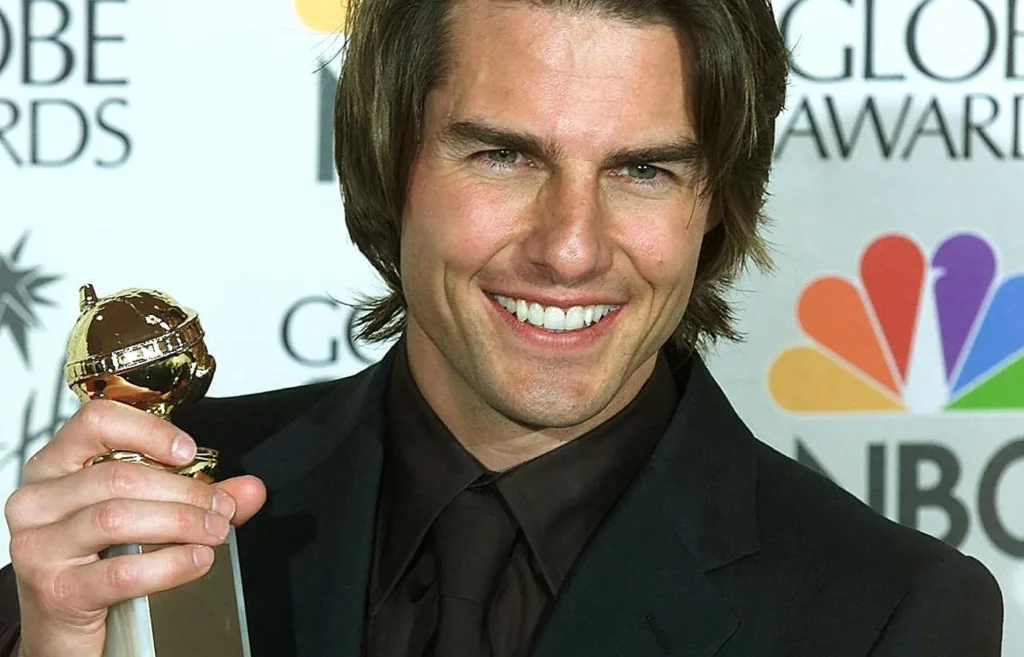
It’s crazy to me that if anyone defeated Cruise, it was Caine. Also nominated were Haley Joel Osment in The Sixth Sense, Jude Law in The Talented Mr. Ripley, and Michael Clarke Duncan in The Green Mile. I would have taken any other nominee over Caine, though I am partial to Duncan. I will say that Caine’s speech is one of the best I’ve ever heard (minus the thanking of Harvey Weinstein). I can speculate until the cows come on why Cruise didn’t win. Perhaps Academy members didn’t want to award him for playing such a crude character? Perhaps it was because The Cider House Rules overperformed at the ceremony with six nominations total including Best Picture and Director and another win for Best Adapted Screenplay. Magnolia only got two additional nominations: one for Original Screenplay and one for Original Song (Aimee Mann’s “Save Me”). Maybe the love for Magnolia just wasn’t there. I can’t answer for sure. It’s just a shame to me that, as of this writing, this remains Cruise’s final Oscar-nominated performance. Having achieved superstar status and with three Oscar nominations under his belt, it’s time to see what the new millennium would bring for Cruise.